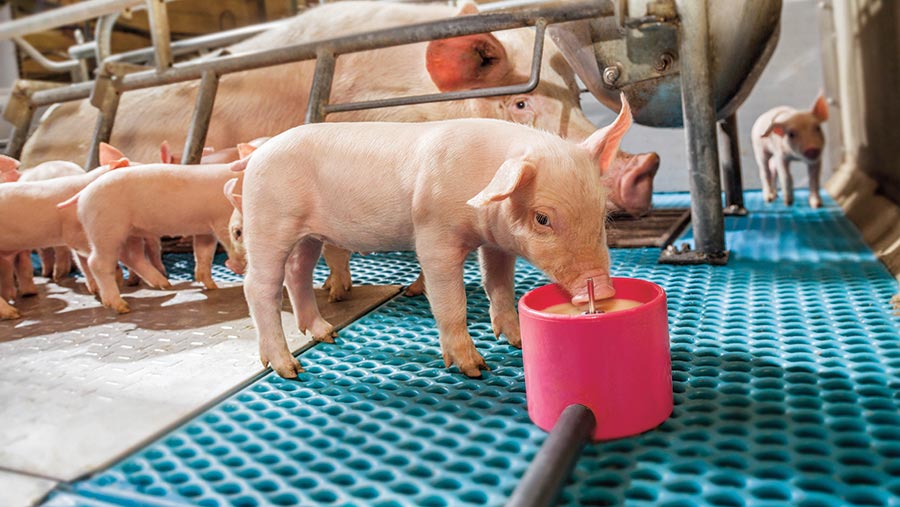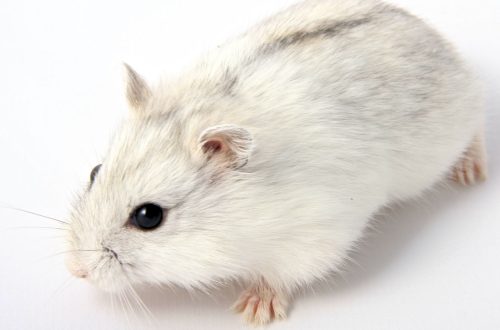
Ụzọ dị irè isi lekọta ezì mmiri ara ehi kwa ọnwa na otu esi azụ ha
If you decide to start breeding piglets or just keep a few for meat, then you must definitely know how and what to feed small piglets.
Up to one month, the piglet feeds mainly on sow’s milk. During the day, sucklings eat up to 22 times, but starting from the 14th day of life, they are introduced into the diet of complementary foods. First – it’s dry mixes with cow’s milk.
chọrọ iron is added in the form of vitamins, since their growth during this period is very rapid. By the first month of life, piglets are weaned from the sow and transferred to self-feeding.
ọdịnaya
Methods and nuances of nutrition
It is this period that is the most difficult for both the pig breeder and the little pig. Each owner, buying a weaned piglet or weaning it on his farm, seeks:
- Save all livestock;
- Provide proper care and systematic feeding so that at 4 months the young weigh from 35 to 50 kilograms, depending on the breed;
- So that all piglets are vigorous, frisky and, most importantly, healthy, as some will become successors of the family in the future.
To ensure all the necessary conditions, each farmer must know that weaned piglets are kept in the same pen where they were with the sow. It is also necessary to observe the temperature regime, it should not be cold in the barn, the temperature is within 18-22 degrees. The temperature is below 16 degrees, drafts cause serious diseases in piglets: bronchitis, pneumonia, and as a result, low appetite and even death.
Iji balance correctly nutrition of small piglets, it is necessary to know the features of the animal’s digestive system in the second month of life. If in an adult, gastric juice, which is important for the normal functioning of the digestive system, is secreted during feeding, then in piglets of the second month of life, after eating. At the same time, its amount is almost the same both day and night.
It is worth knowing that in piglets up to 3 months there is almost no hydrochloric acid in the gastric juice, but there are the necessary enzymes pepsin and chymosin, they are responsible for the breakdown of milk proteins. Knowing that hydrochloric acid not only participates in the digestive process, but also protects the body from various pathogenic bacteria that get inside with food, it is worth ensuring the cleanliness of the feeder and food.
kpọmkwem low concentration of hydrochloric acid in the stomach entails a large number of diseases of the gastrointestinal tract in piglets in the first two months of life. The normal concentration of acid in the stomach is reached at 3 months of life of the animal.
As soon as the piglet is weaned from the sow, he experiences severe stress, very often there is a loss of appetite, weight loss, slowdown or stunting. Here it is necessary for the pig breeder to work properly: organize care, provide care so that the piglets endure this period more easily, recover faster and begin to gain weight and grow.
Gụnyere na the weight of young piglets is growing rapidly, then in the diet of monthly weaners should be feed with a high content of all essential nutrients: proteins, vitamins, minerals and carbohydrates.
Some farmers remember the deplorable practice of collective farms, when the survival rate of suckling pigs was minimal. This was due to the fact that young animals up to one month old were fed by sows and dry top dressings were introduced on cow’s milk. After one month, these animals were completely weaned from the sow and switched to a diet without milk. It was a sharp weaning that reduced development in growth, weight gain practically stopped, and up to 50% of piglets died.
Given this fact, it is necessary for everyone who raises monthly piglets to remember that the diet should contain natural cow’s milk, and the introduction of yogurt would be an ideal option. Calculation of this product: 1-1,5 liters per day per head.
This method allows you to save on the consumption of grain feed, they have a rapid weight gain. As practice shows, piglets that receive up to 2 liters of milk and 1 kilogram of grain per day have more weight per week than those fed with XNUMX kilograms of dry food.
Piglets eat well and give growth not only from whole milk, but also from dairy products. They can be given reverse – the milk remaining after the selection of oil, not acid whey. Given that the fat content of these dairy products is lower, the rate is doubled.
Piglets in the second month of life need good care. It is advisable not to drastically change the type of dry food. According to the recommendations of experienced farmers, 2 weeks before weaning and 2 weeks after, young animals should have the same dry mixes in the diet. If you drastically change the diet, the animal may refuse to eat, and as a result, not gain the necessary weight.
If you plan to drive piglets out to pasture, then this is the period of adaptation. First, green bait is introduced into the diet for several days, and then they gradually go out to pastures, for 20-30 minutes 3 times a day. By the end of the second month, the animals should spend on pasture 1-2 hours 3 times a day.
Root crops are the favorite delicacy of weaned piglets. Introduce boiled potatoes, raw carrots, beets into the diet. If your young animals grow in the summer, then green plants with mineral supplements should prevail in the feed, and if they are born in the winter, then try to saturate the food with concentrates, juicy feed fruits, mineral supplements and hay from legumes.
Daily norms for dairy individuals
Particular attention should be paid to the daily intake of minerals, protein, carbohydrates and vitamins. Daily rate per 1 kg of feed:
- Calcium – 9 g;
- Phosphorus -6 g;
- Table salt – 6 g.
As concentrates for feeding young piglets, natural feeds can be used: barley, oats, peas, soybeans, corn, wheat bran, millet, malt sprouts, cake, yeast.
Be sure to include natural feed of animal origin in the diet: meat and bone meal, fish meal, milk.
Introduce roughage: tender parts of leguminous grass hay leaves.
Given the fact that suckling pigs very often develop anemia in the second month of life, it is necessary to balance the diet and avoid this unpleasant disease. To do this, a solution of ferrous sulfate can be introduced into the diet of a young animal. It is put in drinking water, you can add a little to food, and if this is the first month of life, then smear the nipples of the uterus. If you provide complex mineral nutrition, then you will avoid many disorders in the development and functioning of the gastrointestinal tract. 10 ml of solution is placed on one head. 1 g of iron sulfate, 2,5 g of copper sulfate, 1 g of cobalt sulfate are diluted per 0,3 liter.
Possible diseases and ailments
According to the recommendations of experienced farmers, in order to avoid the development of beriberi, it is necessary to accustom young animals to full-fledged starter feed as soon as possible, expose to sunlight, and introduce green bait.
In order to avoid piglet obesity in the future, it is necessary to correctly calculate the amount of proteins, carbohydrates, and provide walks in the fresh air. Do not think if you overfeed the animal from 1 month, then it will have more meat and fat. These are delusions. Overfeeding leads to increased bone growth.
Nutrition for rapid growth and weight gain
For correct and rapid growth, it is necessary to distribute the percentage daily feed ratio:
- Summer period – up to 4 months, greens and additives to concentrates should prevail;
- Winter period – root crops must be added to concentrates and mixtures.
As practice has shown, piglets that receive yeast bait grow faster and weigh more than 6 kilograms than piglets without this bait. But for the introduction of yeast feed, it is necessary to clearly comply with the following conditions:
- All yeast feeds are introduced gradually. At first, the daily rate should not be more than 10-15% of the total mass of the diet. In the following months, this bait is brought to 50% of the total diet.
- Use a high quality yeast feed for feeding. If you feel a bad smell, sour, then such food can cause severe disorders of the gastrointestinal tract.
- If you have introduced this food and notice a deterioration in the piglet’s appetite, then you must immediately stop giving this food. Only after 15-20 days you can repeat its introduction.
- For small piglets, it is very important to follow the basic rules of sanitation. Food troughs should be cleaned regularly. Up to 4 months of age, it is not desirable to develop young animals. They begin to worry additionally, to fight among themselves. Do not attach animals of different litters, this can also affect the appetite.
In the second month of a piglet’s life, it is recommended separate and feed separately developmentally delayed individuals. They need special care, feed with a high content of animal protein. For them, the dose of cow’s milk is also increased by 20% per head. These individuals must be washed in summer and cleaned in winter to avoid skin infections.
What to feed monthly piglets?
At this stage of development, piglets should not be given all the prepared food at once, it is given in parts – 2-3 at a time. Feed the animal should be without undue excitement. Excess can lead to the most unpleasant consequences.
In order for the animal to gain the optimal amount of fat and meat, it must be given food of the highest quality.
It is worth knowing that feeding in the second month with corn, buckwheat, rye, wheat, barley bran reduces the amount of meat in the piglet, and the fat only increases.
If you include in your diet a large amount of soy, oats, cake, then fat and meat generally stop their active growth, and bone tissue is gaining strength. At the same time, the meat of an adult piglet will be loose, and the fat will immediately turn yellow.





